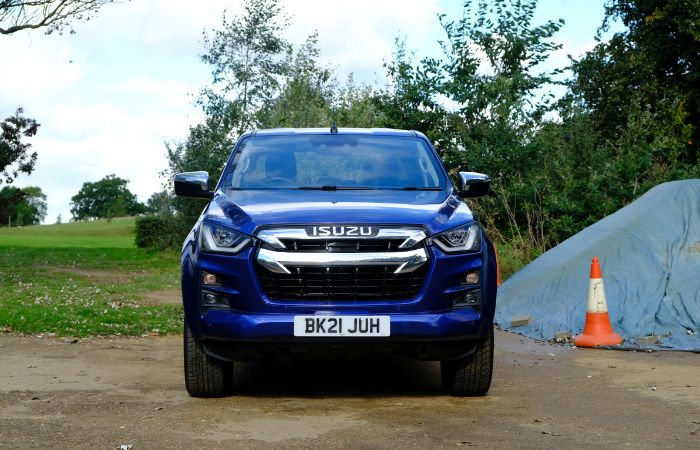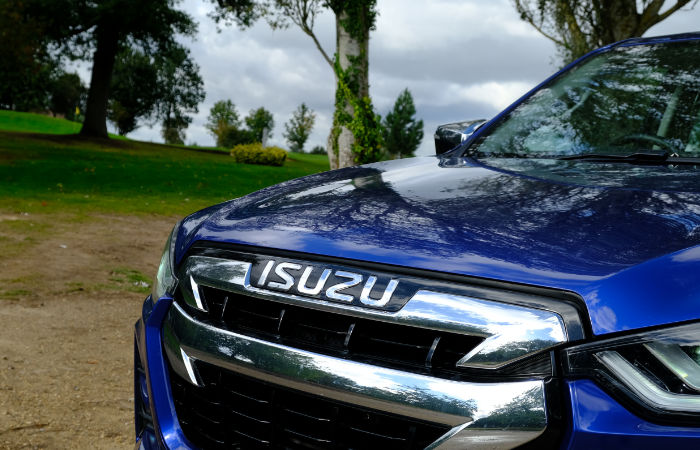Isuzu is something of a specialist in the UK. They only do pickup trucks, but how well? The Isuzu D Max was established in 2002. The first and second-generation models shared a platform with the Chevrolet Colorado. The third generation launched in 2019, then the pandemic hit like a tsunami, but the new generation D Max survived. And finally, here it is, not quite the king of Pickups, more an alternative to the alternative. And the alternative is shrinking in the UK. Mitsubishi is vacating these green and sometimes pleasant lands, taking with it the L200 Pickup. Volkswagen’s Amarok is purely for lifestyle posers and that leaves the Toyota Hilux and Ford Ranger as the alternatives to the alternative. And no, the Mercedes X Class is not even worthy of being considered the alternative, alternative, alternative because it has been sent to the pit of hell from which it arose.
In terms of annual sales, the Ford Ranger is the clear king of pickups in the UK. So how good is the alternative? It’s not too bad on first impressions. The D Max exterior styling reveals a pickup gait, the third-gen looks as modern as a contemporary pickup can look. LED headlights and mouthy post-modern grille combine to give an assertive on-road presence. And yes it is a big vehicle to stand next to and get into.

And when you do get inside you realise that the interior is geared towards working life. Hard plastics abound, the exception being the door armrests, the top of the dash, and of course the leather-faced seats. And you know what? I am fine with that, it doesn’t bother me. But it would if it was a Dacia. That brand also needs to be sent to the gates of hell, but we’re fairly sure Lucifer himself would turn away a Dacia… any Dacia. Anyway. I digress. Back to the D Max.

The D Max is available in 3 ranges starting with the no-frills, steel-wheeled Business followed by All-Purpose and Adventure. And the model ranges are further split into four sub-trims. For the purposes of this review, all you need to know is that the model range/model being tested is DL40 which is at the top end of the D Max ownership chart and that means it is fully loaded with kit.

Leather upholstery, heated leather front seats, and an 8 way electrically adjustable driver’s seat. A multi-functional steering wheel, which is standard these days. Beyond that lies the driver’s binnacle which fuses an analog and digital display. But this is 2021, and in my opinion, the driver’s binnacle should be entirely digital. To the left is a 9-inch infotainment screen, it isn’t the sharpest or brightest out there but it is one of the simplest to use. Because of the bare-bones menu system, the UI is very basic. A couple of icons, and that’s it.

And that’s a good thing because it boots up quickly and comes with Android Auto and Apple CarPlay. I guess Isuzu product planners decided, why waste time and money competing with Google and Apple? We’ll develop a barebones infotainment system and let Android and Apple do the hard work. Indeed the interior is very simple, I would say clean, minimal, the quick access physical buttons are neatly arranged in a row. It’s spacious up front, sensible with good large storage cubbies. Although as with any double-cab pickup truck the rear passenger space does lack legroom for anyone who has the privilege of being over 6ft. The rear load bay isn’t as big as I imagined. It is big, but it will struggle to fit anything over 160cm in length with the rear liftgate closed.

You even get driver safety tech such as lane assist. Although the D Maxs’ software needs updating because the lane assist steering is quite aggressive at times in keeping you on the straight and narrow. It almost feels like too much force-feedback.

The D Max is powered by a 1.9-Litre, 4-cylinder turbo diesel. In terms of noise suppression, it isn’t the most refined at idle. And when you drive through the gears, 6-speed Auto in this particular variant, the engine sounds… agricultural. In all honesty, I did not find it offensive, but I would if it was a diesel-powered Dacia. That being said the wind and noise levels are very well suppressed. But the engine at revs is like an omnipresent thought. However, Isuzu has developed a revolutionary new technology to cancel out the diesel engine noise from penetrating the cabin. It’s an 8 speaker audio system with excellent bass.

The 1.9-litre diesel generates 164bhp and 360Nm of torque. Other reviews have stated that the engine lacks power. The truth is, it’s more than capable, and importantly has plenty of torque in reserve. The 6-speed automatic transmission could do with an extra ratio, it tends to shift a little too early and rev a little extra to access that power. Having said that I never felt the D Max lacked power, it’s the power delivery that is lacking. You see, motoring journalists want every test vehicle to ride like it’s on rails and have supercar levels of power.

In the real world, that’s not going to happen, and motoring hacks need to be realistic. Like it’s realistic to assume the Daily Car Blog is not going to win a prestigious award of any kind. Motoring hacks need to live in the real world. Or buy a supercar. In all honesty, they do neither.

But the driving experience is where it matters and this is where the D Max story starts to get interesting. And it doesn’t get off to a good start because the D-Maxs’ rear axle rides on leaf suspension, ideal for carrying heavy loads, but compromised for overall ride comfort. And as with all leaf suspended vehicles, the car exhibits uncertainty when taking a corner with a bit too much enthusiasm. That is the way of leaf suspension.

The Isuzu D Max DL40 is fully off-road capable. In this case, the D Max DL40 was equipped with 4-wheel drive and a locking differential. And that means if you are an Australian you can go chasing Kangaroos in the roughest terrain the outback muster and return safely home to your day job in the city. And you will probably get around 33mpg to boot.
The D Max tends to pitch and roll when cornering, the rear axle becomes unloaded and the weight transfers to the front making for a rear light end. In the dry, it’s perfectly stable and predictable but when it’s wet, happy days are here again. However, I would suggest flicking the D Max into full 4-wheel drive mode when it’s raining or slippery because you can have too much of a good thing.

The best thing about the D Max is that in standard 2-wheel drive mode power is sent to the rear wheels. And when the roads are wet, and you happen to chance it around a nearby roundabout (with a bit of camber) you can get the rear to kick out, it is absolutely outrageously good fun!
The Izuzu D max is utilitarian by design and its purpose is to loyally and dependably serve its owners. It is a workhorse and a functional tool that can also double up for your everyday lifestyle needs. If the D Max was a planet orbiting a star in a solar system, then it would reside in the circumstellar habitable zone. And that is comfortable enough for me.








